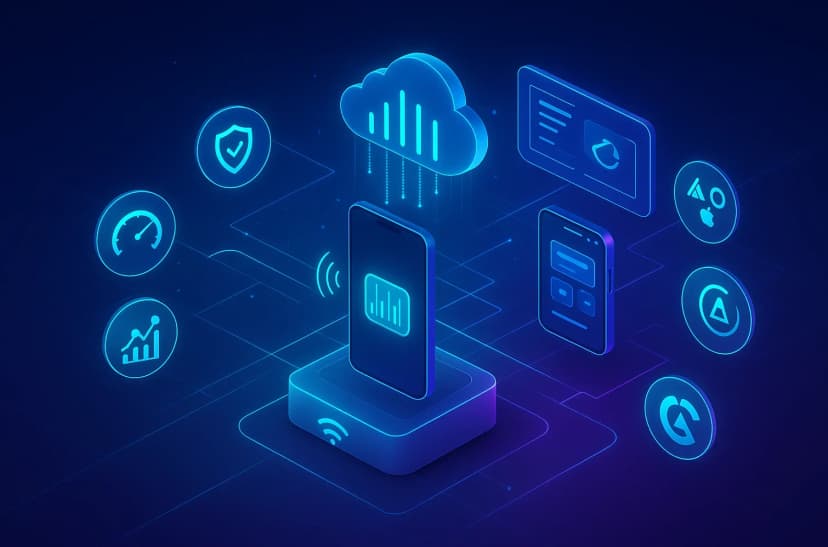In today’s rapidly evolving tech landscape, the Internet of Things (IoT) is no longer just a buzzword; it’s a reality transforming industries. From smart homes to connected cars, IoT devices are everywhere, promising enhanced convenience, efficiency, and innovation. But with great power comes great responsibility – and the need for rigorous IoT testing. Let’s delve into the essential components of IoT testing, explore its benefits, look at real-world applications, and discuss future trends and effective strategies for businesses.
Introduction to IoT Testing
IoT testing is a complex process involving various layers and components. Unlike traditional web application testing or mobile application testing, IoT testing includes hardware, software, communication protocols, and data management. Ensuring these components work seamlessly together is crucial for the success of any IoT deployment.
Key Components of IoT Testing
Device Testing
- Hardware Testing: Verifying the physical components of IoT devices to ensure they operate correctly under various conditions.
- Firmware Testing: Ensuring the firmware (software programmed into the device’s hardware) functions as expected.
Network Testing
- Connectivity Testing: Assessing how well IoT devices connect and communicate over networks (Wi-Fi, Bluetooth, Zigbee, etc.).
- Protocol Testing: Evaluating the communication protocols to ensure data is transmitted accurately and securely.
Security Testing
- Vulnerability Assessment: Identifying and addressing potential security flaws in IoT devices and networks.
- Penetration Testing: Simulating cyber-attacks to evaluate the robustness of the IoT security measures.
Performance Testing
- Load Testing: Measuring how IoT devices perform under varying loads and stress conditions.
- Scalability Testing: Ensuring the IoT system can handle increasing numbers of devices and data volumes.
Interoperability Testing
- Compatibility Testing: Verifying that IoT devices can work with different operating systems, platforms, and other devices.
- Integration Testing: Ensuring various components of the IoT ecosystem (sensors, devices, networks, applications) work together seamlessly.
Usability Testing
- User Interface (UI) Testing: Evaluating the user interface for ease of use and accessibility.
- User Experience (UX) Testing: Assessing the overall user experience to ensure it meets expectations.
Benefits of Comprehensive IoT Testing
Implementing thorough IoT testing brings numerous benefits:
- Enhanced Security: Identifies and mitigates security risks, protecting sensitive data.
- Improved Performance: Ensures devices and networks operate efficiently under different conditions.
- Better User Experience: Ensures devices are user-friendly and meet user expectations.
- Increased Reliability: Reduces the likelihood of device failures, ensuring consistent performance.
Real-World Examples of IoT Testing Applications
- Smart Homes: Testing the integration of smart thermostats, lights, and security systems to ensure seamless operation.
- Connected Cars: Evaluating the performance and security of vehicle-to-vehicle (V2V) and vehicle-to-infrastructure (V2I) communication.
- Healthcare: Ensuring the reliability and accuracy of wearable health monitors and remote patient monitoring systems.
Here, mobile application testing and web application testing often overlap with IoT testing, ensuring apps that manage IoT devices work flawlessly.
Future Trends in IoT Testing
The future of IoT testing looks promising, with several emerging trends set to revolutionize the field:
- AI and Machine Learning: Leveraging AI to predict potential failures and optimize regression testing processes.
- Edge Computing: Testing devices at the network edge to improve real-time processing and reduce latency.
- 5G Networks: Ensuring IoT devices can leverage the high speed and low latency of 5G networks.
- Blockchain Technology: Enhancing security testing by validating transactions and data exchanges through blockchain.
How Businesses Can Implement Effective IoT Testing Strategies
To implement effective IoT testing strategies, businesses should:
- Adopt a Holistic Approach: Integrate all components of IoT testing (device, network, security, performance, interoperability, usability) into a comprehensive strategy.
- Utilize Automation: Leverage automation testing tools for efficient and accurate testing processes.
- Stay Updated with Trends: Keep up with the latest trends and technologies in IoT testing to remain competitive.
- Collaborate with Experts: Partner with experienced IoT testing service providers to ensure thorough and effective testing.
For more detailed information, you can explore IoT Device Testing Services, AI application testing, and regression testing offered by Testriq.
Conclusion
As IoT continues to expand, the importance of robust and comprehensive IoT testing cannot be overstated. By understanding the key components, leveraging the benefits, keeping up with future trends, and implementing effective strategies, businesses can ensure their IoT deployments are secure, reliable, and successful.
Ready to take your IoT testing to the next level? Contact us at Testriq for expert automation testing, regression testing, web application testing, and mobile application testing services.
About Nandini Yadav
Expert in IoT Device Testing with years of experience in software testing and quality assurance.
Found this article helpful?
Share it with your team!
